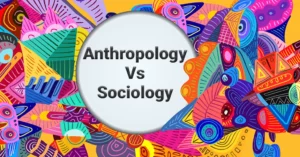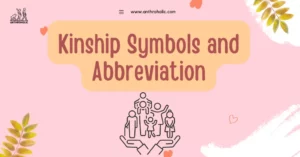AI Answer Evaluation Platform Live Now. Try Free Answer Evaluation Now
Monogamy
Meaning
Monogamy is defined as the socially sanctioned union of two spouses. This union is often marked by exclusivity, though that is not always the case. Hence, sexual monogamy exists serially in some societies. Additionally monogamy may be practised alongside other aspects of romantic, emotional and sexual courtship.[1]

Monogamy is not confined to marriage and can have a diverse set of connotations based on legal, financial as well as social exclusivity in non-marital relationships. They occur in forms like sexual, social and genetic monogamies. Monogamy is viewed by sociologists as a formation of normative institutional relationships which are facilitated by complex social dynamics and regulated by legal or religious frameworks.[1]
Origin
Scholars have long debated the emergence of monogamy as either rooted in evolutionary success or in cultural practice. It is accepted that ancestral hominid species transitioned from promiscuity to polygamy to monogamy in a successive fashion bearing all ecological and cultural circumstances in mind. In hindsight, over 4.4 million years ago male species mated with many females at once. This is replicative of present-day primates like chimpanzees who compete for females as a means of attaining higher rank.[2] However, chimpanzees are hardly polygamous since they seem not to have any long standing relationships with multiple partners either. Moreover, males largely do not practise paternal care toward their offspring. Around 3.5 million years ago, the presence of single-partner relationships increased from studies made on finger lengths of hominin remains which demonstrate a significant sexual dimorphism based on hormonal differences.[3] This can be explained by two factors. Firstly, low-ranking males began to achieve sexual success by affecting female mate choice as well as inclination toward fidelity. Secondly, females began responding to low-ranking males as catalysts to pair-bonds, leading to enhanced paternal care which allowed cooperative behaviour in communities and (perhaps) kinship networks.[4]
A wide range of scholars suggest that as opposed to monogamous ancestral behaviour, our direct lineages witnessed fathers nurturing, protecting and grooming their offspring for survival. This marks a significant change in human evolution, perhaps even paving way for paternal alloparenting which is seen in modern tribes like the Australian aborigines (Alyawara) and some West African tribes (Aka).[5]
In some regard, subsequent developments of complex civilizations did promote faithfulness to a single partner as Sigmund Freud speaks about in his Civilization and its Discontents (1930). However, the extent of the correlation of the two things is not entirely clear. Ancient civilizations including Babylon, Mesopotamia, Egypt and the Greeks, all had provisions and economic motives for monogamous marriage but lacked any rigid norms to prohibit multiple sexual partners. This thus, points more to the idea that humans never fully became monogamous.
Scientists have provided the data suggesting that only about 3 to 5 percent of ~4000 mammalian species practise monogamy in some capacity (serially or socially).[6]
Demographics of Monogamy
According to Murdock’s ethnographic atlas 27% of 1170 societies don’t practise polygyny, in fact a far less fraction of this will purely practise monogamy. Approximately 85% of societies in the anthropological record permit more than one wife for a man.[7]
In the USA, one of the recent surveys yielded results showing 23% adults of a small sample size claimed to be in a non-monogamous relationship at varying degrees. In Europe, monogamy is most accepted due to Christianity and other economic factors. In Asian countries like Japan, China, India and Nepal polygamous marriages are legally prohibited but there’s no data to firmly assert that these nations are devoid of multiple partner relationships.
The United Kingdom has historically been a Christian country whose laws reinforce monogamy under the marriage act of 1949. Today, it’s the only legal form of marriage in the country. According to a recent survey, fewer than 1 in 20 men and 1 in 50 women had multiple partners in a single year in the UK.[8]
In Australia monogamy is regulated under marriage act 1961 which does not recognize any other form of marriage. In one of the ‘ABC Australia Talks’ survey, 29 percent called marriage an ‘outdated institution’ of which 43 percent were women under the age of 40.
China had been polygamous in ancient times. The marriage laws in 1950 and subsequent policies promoting conjugal family systems resulted in the standardisation of monogamy. However, a few Tibetan minority groups were exempt from these norms and allowed polygamy.
Africa seems to house the most scarce practice of monogamy, legally as well as culturally. In sub-saharan Africa nearly 11% of countries like Mali and Nigeria have some sort of polygamous arrangements.
Economics of Monogamy
Research has continually shown that monogamy prevails significantly in advanced countries rather than less developed countries.[9] This is attributed to the higher level of human capital and average labour income. This can help understand why industrial revolution and infrastructural developments promoted monogamous and conjugal family systems in certain countries of Europe, the Americas etc. The availability of resources can thus be transferred by means of inheritance to the offspring where a man can earn sufficiently for a single family setup.
William Goode recounts this in his World Revolution and Family Patterns (1963) as an economic expansion in the 1950s leading to an increased number of educational facilities, convents, cathedrals, industrial buildings which allowed for better job possibilities and mobility of men from modest work positions to ownership or higher command. This enhanced the value of personal merit and the neolocal family scenario.
In the modern world, in the absence of strict marital monogamy, an earning male or female can use the same incentives of economic surplus to invest in a faithful one-partner union or social monogamy for emotional, romantic and sexual needs. Though the lack of a legal regulation in the same shouldn’t be ignored.
Monogamy in Religion
Religion plays a big part in dictating the level of monogamy or polygamy within societies. Afterall religious doctrines prescribe ways of life based on the subjective belief systems adhered to cultures or countries. The ancient Greeks and Romans were monogamous in relation to marriage but permitted multiple partners otherwise.
Monogamy however, positions itself significantly in history following the advent of popular mainstream religions like Islam, Hinduism and Christianity. Monogamous spousal love is prescribed in Christianity, socially accepted under Hinduism and not strictly imposed in Islam.
In Rig Vedic philosophy, monogamy is most accepted while polygyny is reserved for Royals and Nobles. In recent times however, multiple partners are viewed as a taboo among the Indian demographic with a prohibition on multiple marriages from Hindu Marriage Act 1955. Indian muslims are not restricted to monogamy due to the nature of Islamic doctrine and existing Muslim Personal Law system.
In Africa, a number of folk cultures and muslim dominated regions do not remain restricted to monogamy and practice taking multiple partners within polygynous settings.[10]
Therefore, one can infer that monogamy is addressed in religion only to sanction marital unions. A firm handle isn’t put on the nature of open-relationships or non-exclusive sexual pairings that occur with the largely modernised society. Regardless of religion, a survey has shown that the list of most ‘adulterous countries’ includes Thailand, Germany, Denmark, Italy, France, Spain etc. Which evidently put Europe on the spot inspite of its historical connection to Christianity – a religion emphasising monogamy.
Types of Monogamy
Sexual, social and genetic monogamies occur in different ways depending on the type of culture, individual mindset and geo-political landscape. Policies as well as culture affect the way people adopt types of monogamy. A marriage is a social and sexual monogamy however, a social monogamy can happen between unmarried couples. Similarly, genetic monogamy is found both in marriage as well as people who choose to co-parent. As a result these combinations are relative to specific cases and generally scholars propose two ways to look at monogamy.
Serial Monogamy
This type of monogamy includes having a series of successive relationships with different people but not multiple people simultaneously at once. Marriage is not a prerequisite for serial monogamy but with the advent of accessible divorce laws, remarriage has become common. Serial monogamy also includes marriage after being widowed. This is more of a sequential exclusivity, sexually as well as socially.
Humans generally tend to form a long-term relationship with one person, without its dissolution in mind.[11] Sociologist Serena Petrella regards serial monogamy to be more normative than full monogamy.
Non-Serial Monogamy
A relatively understudied form of monogamy where remarriage is not opted for or even considered but couples stay together until the demise of either of them.
Discussion
Scholars credit monogamy for enabling competitive success of religions, polities and institutions that promoted it, if not made it a norm. Monogamy decreased unmarried males and enhanced their strategic skills toward better personal security, stable occupation and risk-averse lifestyle. One can regard monogamy for reduced criminal behaviour and more focus toward securely raising offsprings. Religion and policy as means of imposing normative monogamy has resulted in legitimate ways of securing wealth and inheritance among the wealthy while providing incentives to hard work among the impoverished.[12]
In anthropological record, the correlation between monogamy and political success has also conversely been addressed. It suggests that historical despots and tyrants benefited from unmarried males as potential soldiers or warriors which helped in their power-related pursuits.[13] Monogamy precedes democracy in history, which is either a by-product or the cause of the aforementioned concept. It is accepted that today a positive statistical relationship exists as cross-national democratic rights and civil liberties strengthen the place of normative monogamy. [14]
Lastly, the ecological and social imposition of monogamy is described by Satoshi Kanazawa in the article Why Monogamy? (1990). The former of which results from environmental conditions that force males to resort to one female and her offspring(s) due to lack of resources. A condition that may have prevailed in all levels of societies including tribal, urban and contemporary cities at different stages. Social imposition is the political or religious framework that would prohibit polygamy due its tendency of increasing male competition, aggression and causing a derailment of unity among social groups. These norms, as Kanazawa notes, are designed to restrict reproductive competition but also to preserve political harmony. [15][16]
Conclusion
In discussing monogamy, an anthropologist needs to investigate the nature of mating systems in ancestral humans or primates and then proceed to analyse the modern demographic scenario. Monogamy has a complicated origin which has little to do with how modern religions and political systems have utilised it. Types of monogamy remain intertwined and limited but anthropological research should make use of both, their place in family life as well as the impact they have on the current youth. Finally, an elaborate discussion has been made to highlight the various scholarly perspectives or debates in regard to monogamy. This article does not place any bias on any perspective, but has sought to redefine monogamy based on global facts.
References
[1] Wong, Angela; Wickramasinghe, Maithree; hoogland, renee; Naples, Nancy A (2016). The Wiley Blackwell Encyclopedia of Gender and Sexuality Studies || Monogamy, Sociological Perspectives on. , (), 1–3. doi:10.1002/9781118663219.wbegss636
[2] Pusey AE, Schroepfer-Walker K. Female competition in chimpanzees. Philos Trans R Soc Lond B Biol Sci. 2013 Oct 28;368(1631):20130077. doi: 10.1098/rstb.2013.0077. PMID: 24167307; PMCID: PMC3826206.
[3] Nelson E, Shultz S. Finger length ratios (2D:4D) in anthropoids implicate reduced prenatal androgens in social bonding. Am J Phys Anthropol. 2010 Mar;141(3):395-405. doi: 10.1002/ajpa.21157. PMID: 19862809.
[4] Baxter, A., Maxwell, J. A., Bales, K. L., Finkel, E. J., Impett, E. A., & Eastwick, P. W. (2022). Initial impressions of compatibility and mate value predict later dating and romantic interest. In Proceedings of the National Academy of Sciences (Vol. 119, Issue 45). Proceedings of the National Academy of Sciences. https://doi.org/10.1073/pnas.2206925119
[5] Kramer, Karen L. (2010-09-23). “Cooperative Breeding and its Significance to the Demographic Success of Humans”. Annual Review of Anthropology. 39 (1): 417–436. doi:10.1146/annurev.anthro.012809.105054. ISSN 0084-6570.
[6] https://beta.nsf.gov/news/animal-attraction-many-forms-monogamy-animal
[7] Henrich J, Boyd R, Richerson PJ. The puzzle of monogamous marriage. Philos Trans R Soc Lond B Biol Sci. 2012 Mar 5;367(1589):657-69. doi: 10.1098/rstb.2011.0290. PMID: 22271782; PMCID: PMC3260845.
[8] https://www.nytimes.com/1994/02/01/science/the-extent-of-monogamy-in-britain.html?smid=url-share
[9] Citci, S.H. The rise of monogamy. SERIEs 5, 377–397 (2014). https://doi.org/10.1007/s13209-014-0113-y
[11] Petrella, S. (2005). “Only with You — Maybe — If You Make Me Happy: A Genealogy of Serial Monogamy as Governance Self-Governance”. In Genealogies of Identity. Leiden, The Netherlands: Brill. doi: https://doi.org/10.1163/9789401201902_017
[12] Clark G. 2007. A farewell to alms: a brief economic history of the world. Princeton, NJ: Princeton University Press [Google Scholar] [Ref list]
[13] Henrich J, Boyd R, Richerson PJ. The puzzle of monogamous marriage. Philos Trans R Soc Lond B Biol Sci. 2012 Mar 5;367(1589):657-69. doi: 10.1098/rstb.2011.0290. PMID: 22271782; PMCID: PMC3260845.
[14] McDermott R. 2010. Expert report prepared for the Attorney General of Canada on the constitutional reference on polygamy. Vancouver Registry 2010. Contract no. S-097767.
[15] Alexander, Richard D. 1987. The Biology of Moral Systems. Aldine
[16] Satoshi Kanazawa and Mary C. Still (1999). Why Monogamy?. Social Forces, 78(1), 25–50. doi:10.2307/3005789




